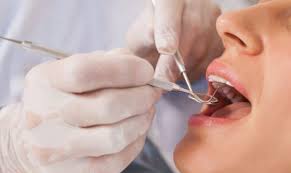Introduction
Rhubarb chard, often simply referred to as Swiss chard, is a leafy green vegetable that has gained popularity for its vibrant colors, nutritional benefits, and versatility in the kitchen. However, many people wonder whether rhubarb chard is edible and how it compares to traditional rhubarb. This article will explore the characteristics of rhubarb chard, its culinary uses, nutritional profile, and health benefits, as well as answer common questions about its edibility and preparation.
Contents
What is Rhubarb Chard?
Botanical Classification
Rhubarb chard, scientifically known as Beta vulgaris subsp. vulgaris, is a member of the Amaranthaceae family, which also includes beets and quinoa. It is a leafy green vegetable characterized by its large, crinkled leaves and colorful stems, which can be red, yellow, or white.
Common Names
Rhubarb chard is known by several names, including:
| Common Name | Description |
|---|---|
| Swiss Chard | The most widely recognized name, often used in culinary contexts. |
| Silverbeet | Commonly used in Australia and New Zealand. |
| Leaf Beet | A name that emphasizes the leafy nature of the plant. |
| Seakale Beet | Refers to the plant’s similarity to sea beet, its wild ancestor. |
| Spinach Beet | Highlights its use as a spinach substitute. |
| Perpetual Spinach | Used for certain varieties that produce leaves continuously. |
| Rainbow Chard | A term used for mixed varieties with colorful stems. |
Nutritional Profile of Rhubarb Chard
Rhubarb chard is celebrated for its impressive nutritional profile. Here’s a breakdown of the key nutrients found in Swiss chard:
| Nutrient | Amount per 1 cup (cooked) | % Daily Value (DV) |
|---|---|---|
| Calories | 35 | 2% |
| Protein | 3.3 g | 7% |
| Carbohydrates | 7 g | 2% |
| Dietary Fiber | 4 g | 14% |
| Vitamin A | 214% | 214% |
| Vitamin C | 53% | 53% |
| Vitamin K | 636% | 636% |
| Magnesium | 37% | 37% |
| Iron | 22% | 22% |
Key Nutritional Benefits
- Rich in Vitamins: Rhubarb chard is an excellent source of vitamins A, C, and K, which are essential for maintaining healthy skin, vision, and bone health.
- Antioxidant Properties: The antioxidants found in rhubarb chard can help combat oxidative stress and inflammation in the body.
- Supports Digestive Health: The dietary fiber in rhubarb chard promotes healthy digestion and can help prevent constipation.
- Low in Calories: Rhubarb chard is low in calories, making it a great addition to weight management diets.
- Bone Health: The high vitamin K content in rhubarb chard is essential for bone health and helps in calcium absorption.
Culinary Uses of Rhubarb Chard
Rhubarb chard is a versatile vegetable that can be used in a variety of dishes. Here are some common culinary applications:
1. Salads
Young rhubarb chard leaves can be eaten raw in salads, providing a crunchy texture and slightly bitter flavor. Combine them with other greens, nuts, and a tangy dressing for a refreshing salad.
2. Sautéed Dishes
Rhubarb chard is often sautéed with garlic and olive oil. This cooking method helps to mellow the bitterness of the leaves while enhancing their flavor.
3. Soups and Stews
Chopped rhubarb chard can be added to soups and stews, providing a nutrient boost and vibrant color. It pairs well with beans, lentils, and other hearty ingredients.
4. Smoothies
Adding rhubarb chard to smoothies is an excellent way to incorporate greens into your diet. Its mild flavor can be masked by fruits such as bananas and berries.
5. Quiches and Frittatas
Rhubarb chard can be used as a filling for quiches and frittatas, adding flavor and nutrition. Combine it with eggs, cheese, and other vegetables for a delicious breakfast or brunch dish.
6. Pasta Dishes
Chopped rhubarb chard can be added to pasta dishes, either as a sautéed component or mixed into sauces. It pairs well with garlic, tomatoes, and cheese.
Can You Eat Rhubarb Chard?
Edibility of Rhubarb Chard
Yes, rhubarb chard is edible and can be enjoyed in various culinary applications. Both the leaves and the stems of rhubarb chard are safe to eat, but it is essential to prepare them correctly.
Preparation Tips
- Washing: Rinse rhubarb chard thoroughly under running water to remove any dirt or grit.
- Trimming: Remove any tough stems and discolored leaves. Young, tender leaves are best for salads, while older leaves can be cooked.
- Cooking: Cooking rhubarb chard can help reduce its bitterness and enhance its flavor. Sautéing, steaming, or adding it to soups are popular methods of preparation.
Nutritional Benefits of Eating Rhubarb Chard
Eating rhubarb chard provides a wealth of nutritional benefits. Here are some of the key advantages:
- High in Nutrients: Rhubarb chard is rich in vitamins and minerals, making it a nutritious addition to any diet.
- Antioxidant Properties: The antioxidants found in rhubarb chard can help protect the body from oxidative stress.
- Supports Digestive Health: The fiber content in rhubarb chard promotes healthy digestion and regular bowel movements.
- Low in Calories: Rhubarb chard is low in calories, making it an excellent choice for weight management.
Growing Rhubarb Chard
Rhubarb chard is relatively easy to grow and can be cultivated in various environments, including gardens, containers, and even indoors. Here are some essential tips for growing rhubarb chard:
1. Planting
- Soil: Rhubarb chard prefers rich, well-draining soil with a slightly acidic pH (6.0 – 6.8).
- Light: It thrives in partial to full sun, requiring at least 6 hours of sunlight per day.
- Spacing: Space seeds or seedlings about 2 inches apart to allow for proper growth.
2. Watering
Rhubarb chard requires consistent moisture, especially during dry periods. Water deeply and regularly to keep the soil evenly moist.
3. Harvesting
Rhubarb chard can be harvested throughout the growing season. For best results, snip the outer leaves while allowing the inner leaves to continue growing. This method encourages new growth and prolongs the harvest.
4. Pests and Diseases
Common pests that may affect rhubarb chard include aphids, leaf miners, and caterpillars. Regular monitoring and organic pest control methods can help manage these issues. Diseases such as cercospora leaf spot may also occur, so proper spacing and air circulation are essential.
Comparison: Rhubarb Chard vs. Traditional Rhubarb
While rhubarb chard and traditional rhubarb share similar names, they are distinct plants with different culinary uses. Here’s a brief comparison:
| Feature | Rhubarb Chard | Traditional Rhubarb |
|---|---|---|
| Scientific Name | Beta vulgaris subsp. vulgaris | Rheum rhabarbarum |
| Edibility | Both leaves and stems are edible | Only the stalks are edible; leaves are toxic |
| Flavor Profile | Slightly bitter, earthy | Tart and tangy |
| Culinary Uses | Salads, soups, sautéed dishes | Pies, jams, desserts |
| Nutritional Value | High in vitamins A, C, K, and fiber | Low in calories, high in vitamin K |
Key Differences
- Flavor: Rhubarb chard has a more pronounced bitterness compared to the tartness of traditional rhubarb.
- Edibility: While both plants are edible, only the stalks of traditional rhubarb can be consumed, as the leaves are toxic.
FAQ Section
Is rhubarb chard safe to eat?
Yes, rhubarb chard is safe to eat. Both the leaves and stems are edible, but it is essential to prepare them correctly.
How do you prepare rhubarb chard for cooking?
To prepare rhubarb chard, rinse the leaves thoroughly, trim any tough stems, and chop the leaves into bite-sized pieces. Cooking methods include sautéing, steaming, or adding it to soups.
Can you eat rhubarb chard raw?
Yes, young rhubarb chard leaves can be eaten raw in salads. However, mature leaves are often cooked to reduce their bitterness.
What are the health benefits of eating rhubarb chard?
Rhubarb chard is rich in vitamins A, C, and K, as well as dietary fiber. It has antioxidant properties, supports digestive health, and is low in calories.
How do you store rhubarb chard?
Rhubarb chard is best stored in the refrigerator. Wrap it in a damp paper towel and place it in a perforated plastic bag to maintain moisture. It can last for about 3-5 days in the fridge.
Where can I find more information about rhubarb chard?
For more detailed information about rhubarb chard, you can visit the USDA National Nutrient Database or the Wikipedia page on Swiss chard.
Conclusion
In conclusion, rhubarb chard is a nutritious and versatile leafy green vegetable that is safe to eat and can be enjoyed in various culinary applications. With its vibrant colors and impressive nutritional profile, rhubarb chard is a valuable addition to any diet. Whether used in salads, sautéed dishes, or soups, rhubarb chard offers a wealth of health benefits and can be easily incorporated into meals. By understanding its characteristics and uses, you can enjoy the unique flavor and nutritional advantages of rhubarb chard in your cooking.





